|
BULB LOG 15 12th April 2005
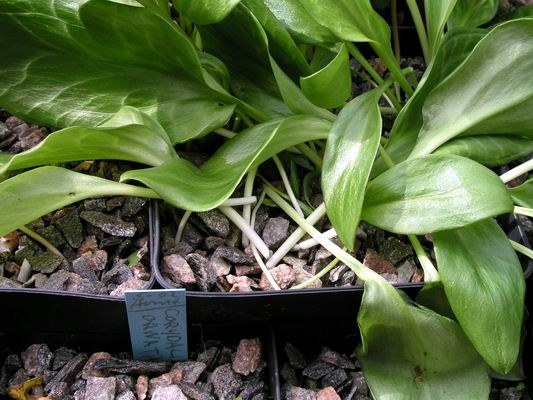
Broken leaf stems
As if to underline the changeability of our weather, this past week we went from being among the warmest areas of the UK with a high of 16C one day to 0C and a 60mile per hour North wind battering everything in its path. The wind was not constant but came in fairly regular gusts which I always think does more damage. We had frame covers blowing about and potted trees blowing over, all the flowers being ripped off some of the large Rhododendrons and many bulbs had their flowers and leaves ripped broken and shredded.
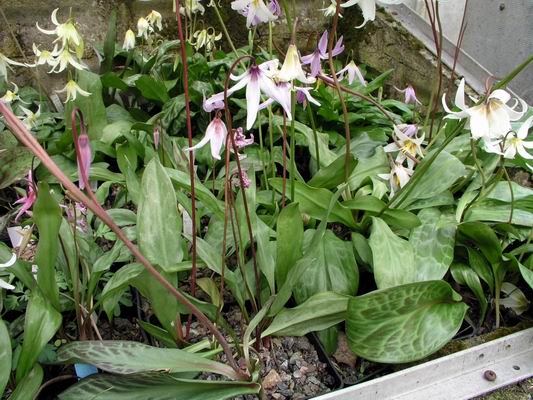
Erythronium wind damage
Even in the frames under a cover the erythroniums did not escape the damage. Erythroniums and Trilliums are just not designed to cope with these conditions of strong wind often blowing with rain, hail, sleet or snow, their leaves get shredded and their stems broken. How to cope with the damage? I do not rush to try and stand the leaves and stems up but let them recover slowly and gladly the damage is rarely as bad as I first fear. The plants do have an amazing capacity to grow on, even though the stem has been snapped; as long as some of the outer skin is intact then some moisture and nutrient will make its way up to the leaves or flowers. I will not get as much seed this year as I would have liked as a compromised stem cannot support seed production.
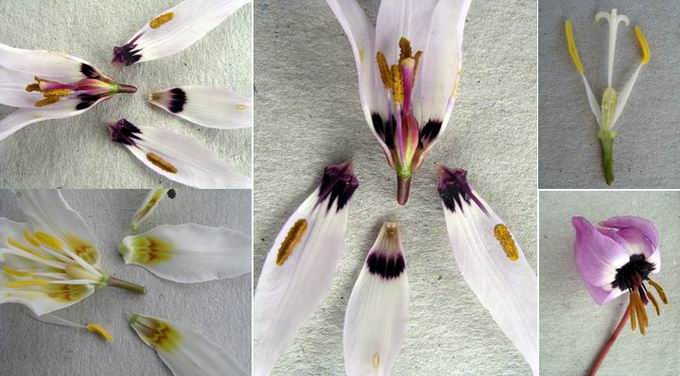
Erythronium montage
I am also an extreme optimist, I always find the positive side of someone else's disaster - every cloud has a silver lining. So the broken Erythronium flower stems are an ideal opportunity to dissect the flowers and take detailed pictures for study and to illustrate my talks.
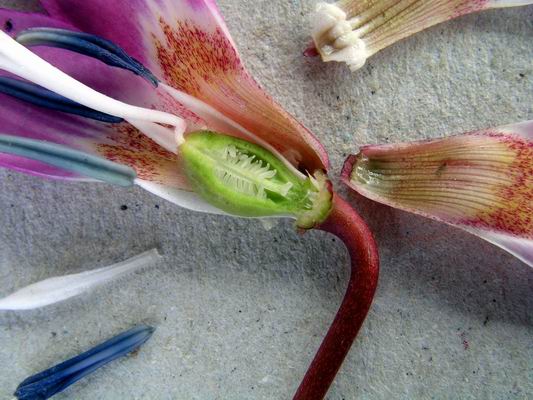
Erythronium dens canis
I love to show pictures like this in my talks to try and help people understand how a flower works - if you understand what is going on you stand a better chance of knowing what the plant needs at any time of its growth cycle.
Notice in the above picture of an Erythronium dens canis flower I have sectioned the ovary so you can see the embryo seeds are already formed, waiting for the pollen to grow down the pistil from the stigma and fertilise each seed individually.
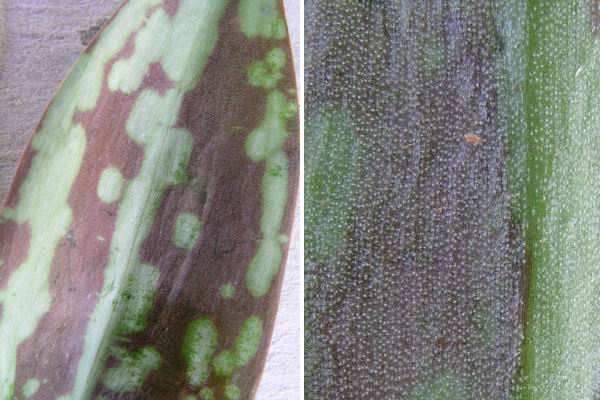
Erythronium dens canis leaf
Reflecting back to my comments about the pattern white "spots" on the Erythronium americanum leaves visible on magnification, I have also found that Erythronium dens canis leaves have a similar pattern but none of the West coast American species seem to display this feature. This only adds to the evidence that the Easter North American Erythroniums are more closely related to the Eurasian conglomerate of Erythronium dens canis.
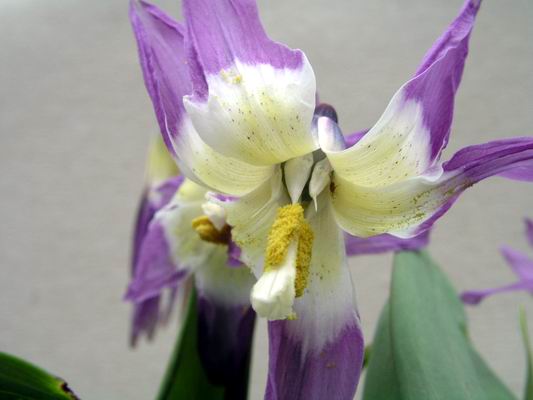
Erythronium sibericum
Part of this conglomerate is Erythronium sibericum, a very attractive species that prefers a cold garden to flower well in cultivation. Like so many bulbs from a cold climate it has a tendency to come through the ground with the flower already past its best if the temperatures are too warm early in the year. We grow it in a cold spot in the garden and others, like this plant, we grow in pots and bring them under glass to get the flower stem up quickly to produce this beautiful tri coloured flower. One set back of this treatment is that the local sparrow population makes very free and easy in the glasshouses and the little bandits pull the pollen laden anthers off the flower.
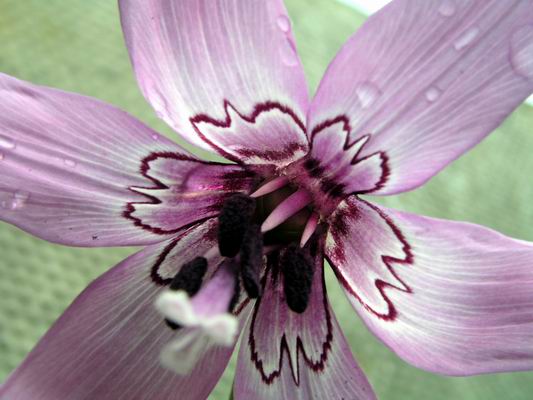
Erythronium japonicum
One of the absolute beauties of the entire genus is Erythronium japonicum; what else can I say, the picture says it all.
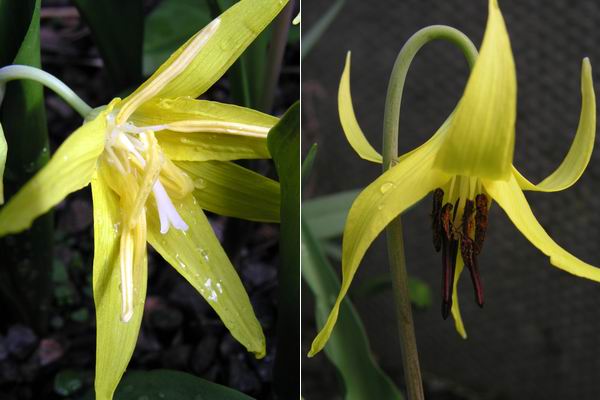
Erythronium grandiflorum x2
Erythronium grandiflorum comes with three different colours of pollen; dark red in grandiflorum, golden yellow in var chrysandrum and white in var pallidum. Elmer Applegate gave these as 'sub species' in his great paper on the Western Erythronium in 1935 but I think that it has now been shown that there are many mixed populations and so that these are, at best, 'varieties' - the above both came from the same wild seed collection.
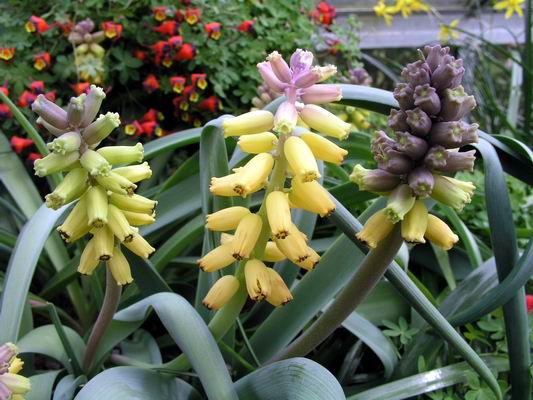
Muscari macrocarpum
To give you a break from Erythronium, can you smell this Muscari macrocarpum? It has the sweetest of scents and Maggi cannot keep her nose away from it - we grow it under glass so we can enjoy the scent. The accidental juxtaposition of the Muscari with the Tropaeolum tricolour works very well and any 'garden designer' would be proud of us for this combination!
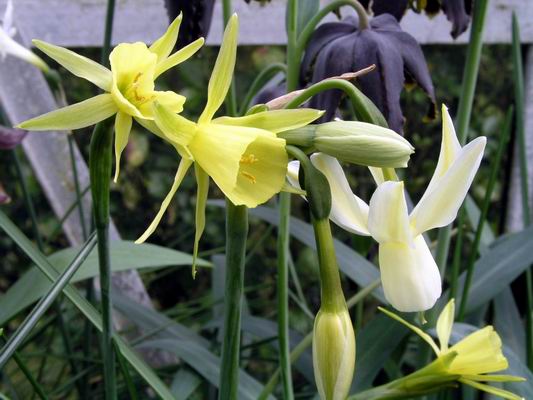
Narcissus triandrus and hybrid
Narcissus triandrus is a beautiful species and among my favourites however I do not find it that easy to keep for any length of time. I am not sure if it is my cultivation methods or if it is a short lived bulb - I would be interested in your experiences via the bulb log feed back in the forum pages please. However to ensure that I always have some of it flowering I am continually raising it from our own seed but here is the catch; it has to be one of the most promiscuous of all the Narcissus it will cross with anything that can get its pollen onto the stigma. This pot shows some true species and some crosses, probably with N. bulbicodium.
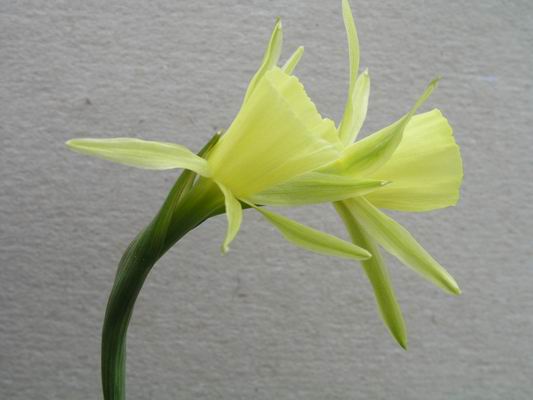
Narcissus triandrus hybrid
I think that this is a very pretty flower and it deserves being grown on so I will rogue it out as the flowers fade and get it into a separate pot. This is very similar to the wild cross between these species that goes under the name of Narcissus rozeiri.

Lady bug
While out photographing in the garden I found this little lady bug, I hope that it has survived the bad weather and will eat lots of aphids in our garden.
I am off to the Dutch International Rock Garden Conference of Alpine Plants at Wageningen in the Netherlands this week - I will be speaking about bulbs and hope to meet many of you there, please come up and say hello.
^ back to the top ^
|

